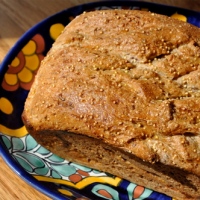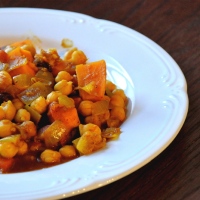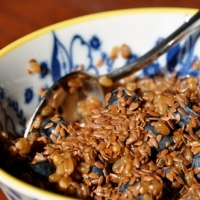This recipe is for cheaters. Not interested in rolling out your own ravioli dough? Take a page out of NYC restauranteurs Frank Falcinelli and Frank Castronovo new cookbook, The Frankie’s Spuntino Kitchen Companion & Cooking Manual. The Franks’ popular Frankie’s 17 in Manhattan’s Lower East Side neighborhood and Frankie’s 457 in Brooklyn serve honest, homemade Italian food in an unpretentious setting. Spuntino, meaning “An informal meal or a snack” and “a casual Italian eatery” embodies the essence of the Frank’s sensible approach to Italian food.
This recipe is interesting in that it uses wonton wrappers to encase the ravioli filling. I know. I was unconvinced, but figured these were some trust-worthy Italian dudes. Surely names such as “Falcinenlli” and “Castronovo” are some sort of Italian credibility currency? I gave it a shot, and the reaction from my guests involved initial looks of skepticism, closely followed by rave reviews and topped off with profusions of thanks and hugs.
The book’s recipe uses a Chinese five-spice powder to season the potatoes. I used it the first time I made it, but swapped it out the second in favor of a 50/50 blend of freshly grated nutmeg and cinammon. The original recipe also serves the ravioli in a cheese broth studded with sage, but I elected to fall back on my perennial favorite, a brown butter and sage sauce.
Sweet Potato Ravioli in a Sage & Brown Butter Sauce
Serves 6-8
3 large sweet potatoes, scrubbed
fine-grain sea salt
freshly ground white pepper (substitute black if you don’t have any)
48 wonton wrappers
1/4 teaspoon of cinnamon and freshly grated nutmeg
2 1/2 tablespoons honey
one stick of salted butter
8 large sage leaves, roughly chopped
parmesan cheese, for serving
1.) Preheat oven to 375 degrees. Drizzle potatoes with olive oil and sprinkle with salt and pepper. Wrap each potato tightly with foil. Roast in the oven until a knife slides easily through the foil and into the potato; 1 hour to 1 hour 45 minutes. Remove from oven, open the foil, and cut each potato open lengthwise to allow for the steam to escape. When cool enough to handle, scrape flesh out of the skins and into a large bowl. Add the cinnamon and nutmeg, honey, a large pinch of salt, and some pepper. Mash with a potato masher or a fork.
2.) Grab your largest cutting board to use as your work surface for assembling the ravioli. Also, have a towel on hand for mopping up excess water and wiping your fingers. Place a small bowl of water next to your stack of wonton wrappers and the bowl of sweet potatoes. To make ravioli, wet your fingers and draw them along the edges of the wonton wrapper. Place a rounded teaspoon of potato at the center of the wrapper. Fold wrapper diagonally over the filling and use your fingers to pinch it closed. You don’t have to drive yourself mad here – you’ll be surprised by how well these little pillows of goodness hold up when they hit the boiling water. If you find you have potatoes spilling over the edges, use less filling. Repeat… 47 more times! Hint: Enlist a hungry housemate to expedite the process.
3.) Heat a very large pot of water to cook the ravioli in. Approximately 3 minutes before your brown butter sauce is ready, salt the water, gently pour in the ravioli, and cook for 2-3 minutes; until skins are transparent and all of the ravioli has floated to the surface. Drain.
4.) Make the brown butter sauce. Heat a small, heavy skillet over medium heat. Preferably, use a silver pan, as it is difficult to keep an eye on the butter’s stage in the browning process in a black pan. Add butter and melt, swirling the pan frequently, until it’s beginning to look nicely browned and some “debris” is falling to the bottom of the pan. You’ll know it when you see it. Your kitchen will smell nutty and intoxicatingly warm and delicious. Add sage and fry for 20-30 seconds; until crisp and fragrant. Remove butter from heat and season with salt and pepper.
5.) Using a large mixing bowl, or the pot you cooked the ravioli in, pour the butter sauce over the ravioli and stir to coat well. Serve with freshly grated parmesan cheese.
This recipe was adapted from The Frankie’s Spuntino Kitchen Companion & Cooking Manual by Frank Falcinelli, Frank Castronovo, and Peter Meehan. Published by Artisan, A Division of Workman Publishing Company, Inc.; 2010.


















